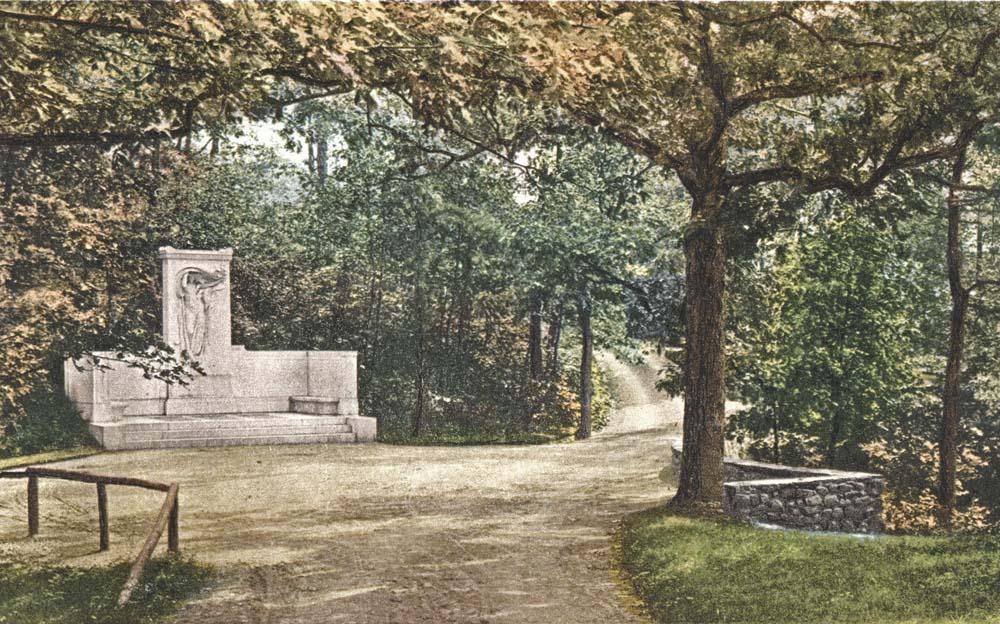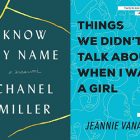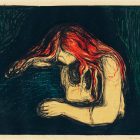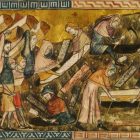Ralph Waldo Emerson’s Grave Encounters

On March 29, 1832, Ralph Waldo Emerson visited the tomb of his wife, Ellen, and opened her coffin. He’d been in the habit of walking from his home in Boston to her gravesite in Roxbury, a distance of almost five miles, every day, and had also been writing to her in his journals as if she were still alive. As biographer Robert D. Richardson explains in Emerson: The Mind on Fire (1995), “this was not a grisly gothic gesture,” nor was it the sign of an unhinged lover. At least two of Emerson’s contemporaries had done the same thing: a Unitarian minister and good friend of Margaret Fuller’s, James Freeman Clarke, had opened the coffin of a woman he’d been in love with when he was an undergrad, and Edgar Allan Poe’s literary executor, an anthologist named Rufus Griswold, opened the coffin of his dead wife a mere forty days after the funeral. Death was more familiar and intimate to those living in 1800s America, both literally and figuratively, and Emerson, then a twenty-eight-year-old minister at an important Boston church who had just lost the love of his life, was by many accounts experiencing both a crisis of vocation and faith.
Emerson was a visiting pastor when he met Ellen Louisa Tucker in Concord, New Hampshire in 1827, and he was immediately smitten with her beauty. She was eighteen when they married; Emerson was twenty-four. She’d intended to be a poet, he a preacher. Already suffering from tuberculous when they met, Richardson describes her poetry as death-marked—“I am the grave’s, its seal is set upon me / Its chalky white and startling vermeil red”—and her letters to Emerson chillingly equate death with love: “Few, let them love ever so ardently and purely, have the happiness to lie down in the earth together—the hand of death while it destroys one, merely numbs (chills) the other as a warning or as a comfort.” The couple did everything they could to improve Ellen’s health, including long outdoor carriage rides and having Emerson’s mother move in with them to care for her, but less than two years after their marriage, Ellen died at the age of twenty.
We can’t know, exactly, what prompted the coffin opening over a year later (his journal entry from that day simply says, “I visited Ellen’s tomb & opened the coffin”), and are instead left to wonder why he did. Richardson explains that the gesture was “pure Emerson,” and that he had to see her body for himself. Other biographers and critics have come to similar conclusions: Emerson was bereft. He had a “peculiar and sorrowful desperate desire for communion with his deceased wife.” Another suggests Emerson might have considered his wife a vampire. But I think there’s more to the story here; this is not an open and shut case of Emerson’s grief, his need to check on Ellen’s remains, or his desire to commune with her spirit.
In my writing circles, we often talk about obsessions. “Dig deeper,” we say in our critique groups when our words hold meaning but barely scratch the surface. Even and especially if we don’t have all the answers, writing toward the subjects that haunt us generally tends to make for better stories. After Emerson opened Ellen’s coffin, he became obsessed with the intersection of spirituality and the natural world—not the ghostly variety that many of his contemporaries focused on during the rise of American Spiritualism in the mid-1800s, but the intellectual, philosophical kind. The story of the man now known, as Richardson proclaims, “the great American champion of self-reliance, of the adequacy of the individual, and of the active soul or spirit” can trace its roots directly back to that day at the grave.
That day, Emerson was in a period of transition, questioning the accuracy of the Bible and becoming increasingly at odds with the church. In June 1832, a year and a half after Ellen’s death, he wrote in his journal, “I have sometimes thought that, in order to be a good minister, it was necessary to leave the ministry. The profession is antiquated. In an altered age, we worship in the dead forms of our forefathers.” As Evelyn Barish explains in Emerson: The Roots of Prophecy (1989), Emerson sought to release himself from the “rigor mortis of his own cultural and personal past—from what he called the ‘corpse-cold Unitarianism of Brattle Street and Harvard College.’” By December, he resigned his pulpit and set sail for Europe, where he studied for ten months, returning with ideas that would forever shape his writing and lectures. By the fall of 1834, he had moved to Concord, Massachusetts, and there, thanks in part to a hefty inheritance from Ellen’s estate, he would soon establish himself as a leading citizen in town, surrounded by a community of writers and thinkers including Amos Bronson Alcott and his daughter Louisa May, Margaret Fuller, Nathaniel Hawthorne, and Henry David Thoreau.
Sprung out of an organic consequence of Unitarianism (the dominant religion in New England at the time) the seeds were thus planted for the Transcendentalist movement. Transcendentalism promoted unity, self-reliance, and intuition over empiricism, where “all events are both material and spiritual,” according to Ian Frederick Finseth in Liquid Fire Within Me: Language, Self and Society in Transcendentalism and Early Evangelism, 1820-1860 (1995). Emerson and his new community of thinkers launched a new literary journal, The Dial, in this spirit. In his editorial introduction, I can’t help but see this endeavor as a kind of proto awakening from a grave: “let it be such a Dial, not as the dead face of a clock, hardly even such as the Gnomon in a garden, but rather such a Dial as is the Garden itself, in whose leaves and flowers the suddenly awakened sleeper is instantly apprised not what part of dead time, but what state of life and growth is now arrived and arriving.” Emerson began lecturing in 1833; by 1850 he was giving as many as eighty talks per year. Would any of this have happened had he not opened that coffin?
A few years after my husband died, I went looking for my own coffin to open. Talking to him in my head felt real; the rest of the world did not. My husband had made the decision to be cremated; I was therefore looking for something intangible: words to explain the uncanny experiences that transpire between the living and the dead.
My search eventually led me to Emerson, and by proxy, to his day at the grave. I wanted to know more. How did Emerson do it? Did he have help? Was it possible he discussed the project ahead of time with his family over the dinner table? Emerson’s family had already seen its own share of loss—Emerson’s father died in 1811 when Emerson was eight years old, and of his seven siblings, only four brothers remained. Although life expectancy in early America was not especially favorable, the remaining Emersons appeared to be a hardy bunch. His mother, Ruth, kept the family together, taking in boarders and ensuring her sons’ educations, and his aunt, the outspoken and eccentric Mary Moody Emerson, his father’s sister, became a kind of intellectual father figure for the young Emerson and his brothers. She might have also provided inspiration for the coffin-opening: as Richardson explains, Mary “had her bed made in the shape of a coffin. She wore her burial shroud when she traveled, and she traveled so much she wore out several shrouds.”
In digging for clues on Aunt Mary, I found myself digging up dirt on Emerson, as well as myself: Emerson and I had both lost our fathers at a young age, as well as our first spouses. As I was discovering more about the nuances of my own hauntings and grief through writing and reading, I uncovered Emerson’s dalliances with magical realism. As Evelyn Barish explains in her essay “Emerson and The Angel of Midnight: The Legacy of Mary Moody Emerson,” published in the anthology Mothering the Mind: Twelve Studies of Writers and Their Silent Partners (1984), Emerson wrote and sent short stories to his Aunt Mary in the early years after he graduated from Harvard. There are two main characters in these stories: Uilisa, a “weird woman” who lives in a cave, erupts out of a leaf pile, and mutters to herself, and a young, unnamed male character, who engages with her. Uilisa has “fiery eyes and perturbed countenance,” and her voice is from “the wrinkled rottenness which the earth spurs from her bosum.” Further along in the narrative, Barish explains, “the speaker is no longer a youth but a rather protective gentleman. He shows a literary attitude toward nature and self-consciously appreciates it.” Barish notes “similarities in supernatural powers and capabilities for prophecy” in both Emerson’s characters and their real-life counterparts, himself and Aunt Mary, and, indeed, the two frequently discussed matters of death and the afterlife. In Emerson’s request for posthumous ideas, Mary responded: “I have nothing to leave but my carcase to fatten the earth—it is for my own sake I long to go,” and when he asked if his aunt might play Cassandra for him, she responded:
Before I ever knew you, I did not ask even a dirge, I invoked nature with rapture to sweep over my grave with her roughest elements: for there would be the voice of a strange spirit, and there might be a strange light to guide the icy worm to his riot. We then feel as becoming ‘portions of eternity’—and ask for nothing of time. Yet I do ask the ask the favor to be remembered rather as a dead Cassandra, not prophesying but praying for thy welfare.
Mary, for all of her prophetic and eccentric tendencies, was at heart both a pragmatist and an outspoken visionary. I can almost see her shaking her head at the young Emerson and telling him to snap out of his gothic fantasy world with the same vigor as my mother, who handed me a sprawling to-do list days after my husband died. Emerson would later write in his journals (Emerson 2, 3:16), “the Kind Aunt whose cares instructed my youth . . . told me oft the virtues of her and mine ancestors . . . the dead sleep in their moonless night, my business is with the living.”
So, then, I had to wonder: what about the coffin was so compelling to him? Emerson had already been asking big questions (his early journals are filled with quotes and ideas gathered from his readings) but as Richardson points out, “there is nothing that Emerson had not learned firsthand.” Would Emerson have walked the whole five miles from Boston to Roxbury with a shovel strapped to his back? I have to assume that a twenty-eight-year-old male in reasonable shape was capable of prying a stone lid off a vault buried at ground level, though I can’t be certain. He doesn’t indicate in his journals if he had help or if there were witnesses. Maybe he did—the editors of the sixteen volumes of The Journals and Miscellaneous Notebooks of Ralph Waldo Emerson (1960- 1982) note that many pages had been torn out.
In reading through my own journals, especially the passages written during periods of major loss, I can easily see the desire to destroy evidence that may not be in sync with one’s outward reputation, and yet I believe Emerson left us the most salient details, even if they remain a bit mysterious. His writings hold clues, almost like secret codes ripe for us to decipher, if only we have the patience and awareness to do so. As an essayist who has previously written about the unconventional ways in which I grieved following the death of my husband, thinking I was onto something only to be ripped apart in the comments section later, I’ve since learned that sometimes the biggest truths, especially when it comes to matters concerning relationships between the living and the dead, are precisely the kinds of subjects many readers would prefer remain underground and hidden.
Ellen Tucker Emerson was buried on the grounds of Auchmuty House, on the corner of Washington and Cliff in Roxbury. Prior to 1831, America had no cemeteries. “It’s not that Americans didn’t bury their dead—just that large, modern graveyards did not exist,” writes Rebecca Greenfield in “Our First Public Parks: The Forgotten History of Cemeteries” (2011). Auchmuty House, where Ellen’s family tomb was located until it was moved to the Mount Auburn Cemetery in Cambridge in 1878, was a large colonial mansion built by a judge in 1761; it was confiscated in 1779, after the Revolutionary War, then owned by Governor Increase Sumner until his death in 1799, and then by Ellen’s father, Beza Tucker, a wealthy Boston businessman. The Tuckers must have sold the estate at some point after Beza died and they moved to New Hampshire, but I have not been able to verify when. Early drawings show a stately estate with well-manicured grounds, shady trees, and a large walled garden. “It is some distance from the street, and the broad, well-worn pavement by which it is approached prepares you for the solid, substantial old house itself,” writes Frances S. Drake in The Town of Roxbury (1908). Ellen and her sisters must have spent their formative years here, playing in the gardens and exploring the surrounding seven acres of land. The house held immense history (military occupation, religious meetings and the formation of churches, and “the secret conclave of crown officers who plotted the overthrow of colonial liberty”). One can imagine Emerson walking to Ellen’s grave every day and communing not just with her ghost but the spirit of his rapidly changing country.
Even as cultural norms around death have shifted since the 1800s, I still have to wonder: In opening Ellen’s coffin, what did Emerson actually find? Corpses typically go through five stages of decomposition: fresh, when the body is stiff but intact; bloat, when tissues break down and release a foul-smelling liquid; active decay, with its maggots and blackened flesh; advanced decomposition, where tissues and cells are almost fully liquefied; and the final stage, when soft tissue collapses on itself, leaving dry or skeletonized remains. In a temperate climate such as Boston, a body exposed to the natural elements would take weeks to several years to fully decompose, but in a long rectangular stone vault such as the Tucker family’s, the lid of which was at ground level, the elements would have been sealed off; the body (er, bodies—Ellen’s father Beza was already entombed, as was her sister, Mary) might have been more preserved. (Embalming as a practice in the United States didn’t begin until the Civil War, when wealthy northern families wanted a less-messy, more-intact way for bodies to be sent home.) “Dead people, unembalmed ones anyway,” writes Mary Roach in Stiff: The Curious Lives of Human Cadavers (2003) “basically dissolve; they collapse and sink in upon themselves and eventually seep out onto the ground.” “No object is so foul that intense light will not make it beautiful,” Emerson later wrote in his address Nature in 1849, “even the corpse has its beauty.”
This is where the proverbial lid of the coffin really flew off for me. Here is a man who clearly knows how to take the horror and the grief and see it for its potential: as compost. Even before Ellen died, Emerson was already thinking along these lines. In 1830 he wrote in his journal, “God is the substratum of all souls. Is not that the solution of the riddle of sympathy? It is worms & flesh in us that fear or sympathize with worms & flesh and God only within that worships God of the Universe.” Later, as his thoughts continued to turn and grow, sprouting more mature material, he would write in Spiritual Laws (1841), “For it is only the finite that has wrought and suffered; the infinite lies stretched in smiling repose . . . Our eyes are holden that we cannot see things that stare us in the face, until the mind is ripened . . . these are the genius of nature: they show the direction of the stream. But the stream is blood: every drop is alive.”
Before I began my deep dive into Emerson’s life and work, I didn’t wonder too much about what ultimately became of my husband’s ashes that I scattered in the harbor out in front of our home on Washington’s Vashon Island. The dust was dense, like silt, and there were bone fragments that resembled bits of barnacle or slices of seashells. Some of the ash blew out of my hands onto my clothes and hair; larger pieces slowly cascaded down beneath the surface of the water, like phosphorescence. But now Emerson’s words have opened my eyes to a much wider perspective: dust as tiny fragments of the never-ending particles that travel and float around us, bits of bone interlaced with an aquatic ecosystem essential to my second family and children, and the conundrum of Emerson’s wife’s remains as part of my growing consciousness.
In 1835, Emerson remarried and started a family. Many said his second wife, Lidian, didn’t feel she could live up to the legacy left by his first, which may be why she suggested they name their firstborn daughter Ellen Tucker. The Emersons’ firstborn son, Waldo, died from Scarlet Fever at age five in 1842. Lidian never fully recovered from the loss, but Emerson did, and, as Dan Chiasson details in a 2015 piece on the influence of Emerson’s poetry, Emerson wrote in a letter, “I chiefly grieve that I cannot grieve”; he also wrote a poem, Threnody, to memorialize his son:
Step the meek birds where erst they ranged,
The wintry garden lies unchanged,
The brook into the stream runs on,
But the deep-eyed Boy is gone.
In 1855, Concord opened a new cemetery named Sleepy Hollow. It was designed as a garden cemetery, in the same fashion as the Mount Auburn Cemetery in Cambridge. Richardson’s biography recounts how Emerson spoke at the opening, praising the Greeks who “loved life and delighted in beauty,” and who “built no more of those doleful mountainous tombs.” Emerson also spoke of “the irresistible democracy of natural processes, of the chemistry which “recomposes for new life every decomposing particle.” On July 8, 1857, Emerson moved the coffins of his mother and his son from the small burial grounds in the center of Concord to a new plot at Sleepy Hollow. He wrote in his journal, “The sun shone brightly on the coffins, of which Waldo’s was well-preserved—now fifteen years.” Once again, Emerson opened the lid of a coffin—this time his son’s. Perhaps too profane, too personal, too intimate; perhaps knowing that it would be years before he’d find the words to describe how he felt about Waldo’s remains—Emerson did not record what he saw.
As Richardson details, virtually all of Emerson’s creative work had occurred during this time span—the days and years between the opening of Ellen’s coffin in 1832 and now Waldo’s in 1857. When Emerson returned home from Sleepy Hollow that evening, his daughter Ellen remembered, “He said he had looked into the coffin, but he said no more.”
Sometimes the right ideas and the right words take a while to germinate, we say in our writing groups. This is why we let words “sit” before turning them around again, allowing us to breathe new life into old work. It took me a decade and a half before I could write about my dead husband in a way that felt authentic, like I wasn’t just scratching the surface of the heavy stuff, but actually prying it open, going deeper into the dark matter and not becoming overwhelmed or terrified by what I might find, only to discover that the richest truths had perhaps been lingering there the whole time. In 1823, as a recent Harvard grad, well before he met Ellen or had found his calling, Richardson tells us that Emerson had had a conversation with a miner in Western Massachusetts who spent all of his time alone in a “damp and silent tomb,” which was “excellent for meditation.” Emerson noted afterward, “we bury an undefined procrastination all our obligations,” and I think of this now, how images, revelations, and ideas—living and dead—can sit dormant, gathering their own unique kind of energy, before rising up and taking on a new life outside of the grave.



